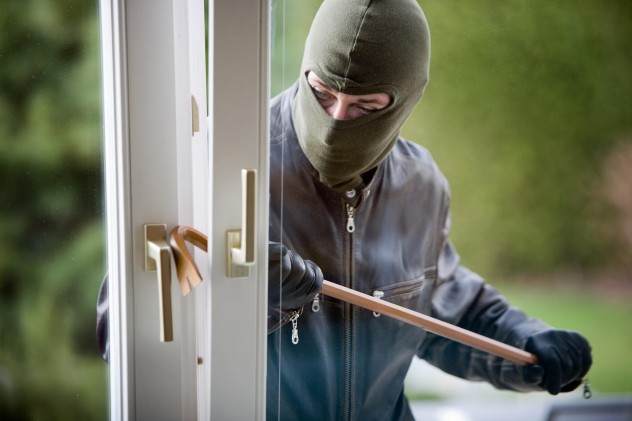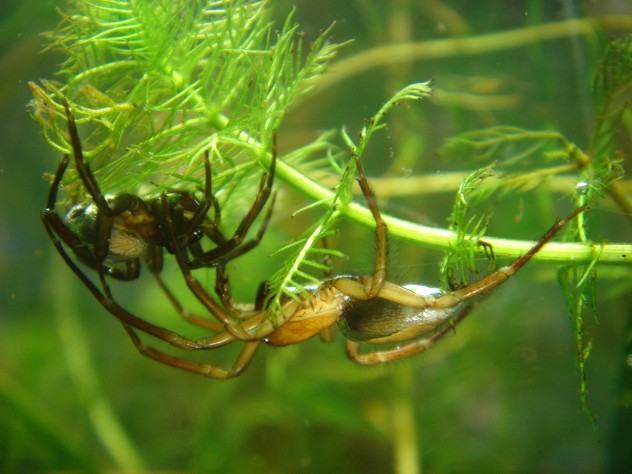 Music
Music  Music
Music  History
History 10 Less Than Jolly Events That Occurred on December 25
 Weird Stuff
Weird Stuff 10 Funny Ways That Researchers Overthink Christmas
 Politics
Politics 10 Political Scandals That Sent Crowds Into the Streets
 Weird Stuff
Weird Stuff Ten Bizarre Facts About The Doge Meme
 Our World
Our World 10 Ways Your Christmas Tree Is More Lit Than You Think
 Movies and TV
Movies and TV The 10 Coolest Stars to Set Sail on The Love Boat
 History
History 10 Things You Didn’t Know About the American National Anthem
 Technology
Technology Top 10 Everyday Tech Buzzwords That Hide a Darker Past
 Humans
Humans 10 Everyday Human Behaviors That Are Actually Survival Instincts
 Music
Music 10 Surprising Origin Stories of Your Favorite Holiday Songs
 History
History 10 Less Than Jolly Events That Occurred on December 25
 Weird Stuff
Weird Stuff 10 Funny Ways That Researchers Overthink Christmas
Who's Behind Listverse?

Jamie Frater
Head Editor
Jamie founded Listverse due to an insatiable desire to share fascinating, obscure, and bizarre facts. He has been a guest speaker on numerous national radio and television stations and is a five time published author.
More About Us Politics
Politics 10 Political Scandals That Sent Crowds Into the Streets
 Weird Stuff
Weird Stuff Ten Bizarre Facts About The Doge Meme
 Our World
Our World 10 Ways Your Christmas Tree Is More Lit Than You Think
 Movies and TV
Movies and TV The 10 Coolest Stars to Set Sail on The Love Boat
 History
History 10 Things You Didn’t Know About the American National Anthem
 Technology
Technology Top 10 Everyday Tech Buzzwords That Hide a Darker Past
 Humans
Humans 10 Everyday Human Behaviors That Are Actually Survival Instincts
10 Creepy Things Spiders Can Do
Spiders are scary. They make webs everywhere, skitter around on eight legs, and haunt the darkest recesses of your nightmares. But that’s not all. In fact, those are some of the most boring things they do.
10 The Herbivore Spider

One spider’s diet consists entirely of plants. This spider, found in Central America and Mexico, is the only one known to prefer eating plants over animals or other insects.
It loves eating the tips of the acacia plant, which has no natural defense against predators. Because of this, the spider isn’t the only creature that eats the plant—some ants do too. In fact, the ants often protect the plant so they can have it for themselves, giving the spider a hard time reaching its food. It circumvents this problem by sneaking the leaves out one by one when the ants aren’t paying attention.
9 Spider-Man Isn’t So Far-Fetched

If someone had the powers of Spider-Man, they’d be able to swing from building to building quite easily—rather, their webbing would support their weight quite easily. This is because spider silk is stronger than steel. A sheet 2.5 centimeters (one inch) thick could stop a fighter jet.
So maybe humans aren’t capable of producing this webbing themselves, but neither was Spider-Man if you read the comics. Now all we need are functioning web shooters and an infinite supply of spider silk, and we can all swing to work instead of taking the boring commute.
8 Spider Thievery

Some spiders get their food almost exclusively by stealing it from other spiders. These spiders enter another spider’s web and take their captured food. After the thievery is finished, they often kill the spider whose home they’ve “broken into.” You can get a front row seat to these spider burglaries in your own home because it’s common behavior for the cobweb spider, which is lurking in your rafters as we speak.
7 They Can Swim

The diving bell spider can stay underwater for over a day. It uses a container that it spins from its own silk to store air bubbles it drags down from the surface.
The air does run out eventually. Because of the nitrate levels in the water, their captured pocket of air begins to grow smaller. When this happens, the spider needs to collect more from the surface.
6 They Molt

All spiders shed their skin. It happens more when they’re young, but it can continue later in life as well. A few weeks before it sheds, the spider will start to act oddly. It might stop eating or get bald patches (provided it’s a tarantula).
The process of molting is long and complicated. A cocktail of hormones causes the spider’s current skin to detach and a new one to be produced, though not necessarily in that order.
5 Spider Decoys

To scare off predators, some spiders make decoys of themselves out of their webs. Some of these decoys are the same size as the spider, and some are considerably larger—presumably to look scarier than the spider itself. Scientists have even observed one spider shaking its web, trying to make its decoy appear to move on its own. Amazingly, these decoys actually work, and spiders that use them attract fewer predators.
4 Space Spiders

A jumping spider was sent into space to see if it could still make webs in low gravity. The spider (named Nefertiti) adjusted to the conditions and was able to catch flies. It couldn’t jump on its prey, so it had to learn to sidle along the web, an ability it picked up in just a few days.
Nefertiti died of natural causes after her groundbreaking space mission—shortly after she had been put on display in the Smithsonian.
3 Their Brains Are Huge

Regardless of their individual size, all spiders make intricate webs. At first, that might seem like a “well duh” moment—webs are just one of those spider things that spiders do. But this ability takes up a lot of brain space, especially when you compare that required space to the spider’s size.
A study showed that the smaller the spider is, the larger its brain is in proportion to its size. In some spiders, the brains were so big other organs overflowed into their legs.
2 Web Decorations

Spider webs are quite beautiful, but not beautiful enough for some spiders, which go the extra mile to spruce up their webs. They usually use silk, but sometimes they use other materials—their egg sacks, for example. There are several theories on why they do this, such as making the web stronger or attracting mates. In a study, one of these spiders made more decorations when its web was damaged, supporting the idea that it strengthens their webs.
1 The Ghost Trees Of Pakistan

In 2011, Pakistanis were amazed when they woke up to find trees entirely covered in spider webs. Millions of spiders had crawled into the safety of the trees to avoid the recent flooding, creating a veritable cocoon of webbing around the foliage.
The webbing gave the trees a ghostly appearance, hence the name. The webs may have even helped reduce the number of mosquitoes that year, due to the sheer size of the webs.
Joel is an amateur writer, fan of tech, and finder of amazing stuff. You can also check out his blog or follow him on Twitter.








